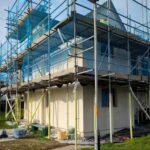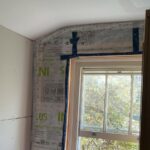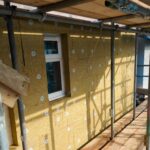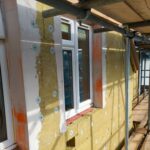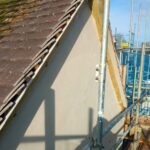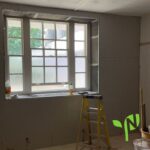In Internal Wall Insulation, IWI by Robert Wheeler / 4 January 2024 / 0 comments
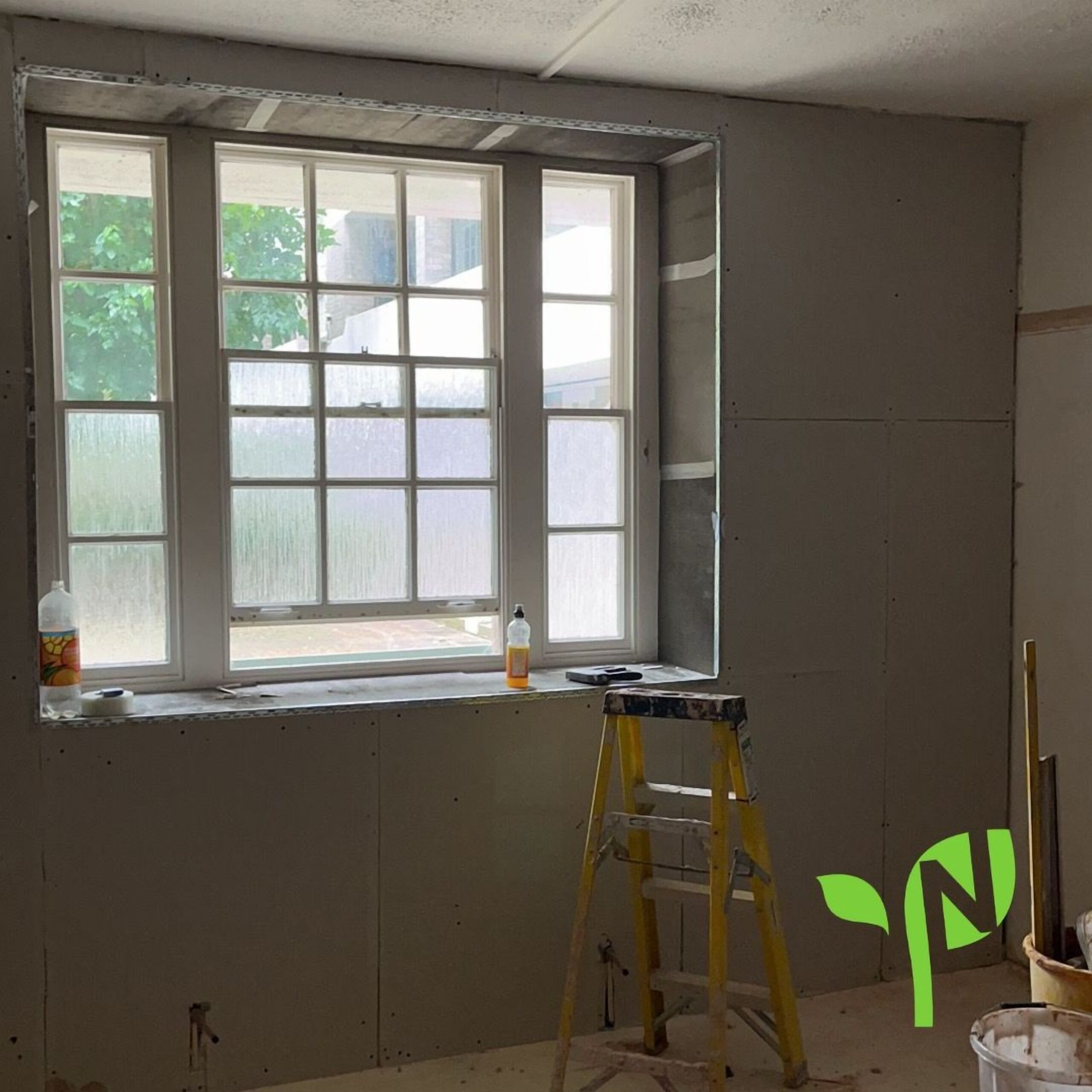
The insulation of interior walls plays a crucial role in maintaining energy efficiency and enhancing indoor comfort. While most homeowners are aware of the importance of insulation in exterior walls, the question of whether it is possible to add insulation to existing interior walls often arises.
In this blog post, we will explore the feasibility of insulating existing interior walls, examining the factors that need to be considered before undertaking such a project. Additionally, we will delve into different types of insulation materials suitable for interior walls, discuss the preparation and planning required, and explore various insulation techniques.
By the end, you will have a comprehensive understanding of the benefits of insulating existing interior walls and be well-equipped to make an informed decision about implementing insulation in your home.
Introduction: Understanding the Need for Insulation in Existing Interior Walls
Hey there, DIY enthusiasts and homeowners! Are you feeling a chill in your living space even with the heater blasting? Or maybe you’re tired of hearing every little conversation from the next room? Adding insulation to your existing interior walls might just be the solution you’ve been looking for. Insulation helps regulate temperature, reduce noise, and increase energy efficiency, making your home a cosy and quiet haven. But before you dive into this project headfirst, let’s take a closer look at whether it’s a feasible option for you.
Assessing the Feasibility: Factors to Consider before Adding Insulation to Existing Interior Walls
Evaluating the Existing Wall Structure
Before you grab your tool belt, it’s crucial to assess the condition of your existing interior walls. Are they drywall, plaster, or something else entirely? Understanding the composition and condition of your walls will determine the insulation methods available.
Determining the Energy Efficiency Goals
What are your energy efficiency goals? Are you aiming to reduce heating and cooling costs or simply improve comfort? Knowing your objectives will guide you in selecting the most appropriate insulation materials and techniques.
Analysing Potential Cost and Time Investments
Let’s talk about everyone’s favourite topic: money. Adding insulation to existing interior walls requires an investment of both your hard-earned cash and precious time. It’s crucial to weigh the potential benefits against the upfront costs and consider whether it’s a project you’re willing to tackle yourself or if hiring professionals is a better option.
Types of Insulation Materials: Exploring Options Suitable for Existing Interior Walls
Fiberglass Insulation
Ah, good old fiberglass insulation. It’s a tried and true option that’s been around for ages. This fluffy pink material is easy to install and offers excellent thermal performance. Just be sure to don your protective gear—fiberglass can be a bit itchy.
Cellulose Insulation
If you’re looking for something more eco-friendly, you might want to consider cellulose insulation. Made from recycled paper products, it’s a sustainable choice that provides good thermal and sound insulation. Plus, you’ll have a great conversation starter about how your walls are made of newspapers.
Spray Foam Insulation
For those hard-to-reach nooks and crannies, spray foam insulation is your superhero. This expanding foam conforms to irregular surfaces and creates an airtight seal, preventing pesky drafts from sneaking into your home. It’s a bit pricier, but the energy savings might just make it worth it.
Preparation and Planning: Steps to Take before Installing Insulation in Existing Interior Walls
Inspect and Repair Wall Surfaces
You wouldn’t build a sandcastle on a shaky foundation, would you? The same goes for insulation. Inspect your walls for any cracks, holes, or water damage, and make necessary repairs before proceeding. A sturdy surface ensures optimal insulation performance.
Clearing Out Obstructions
Is your wall hiding a secret stash of cables, pipes, or other surprises? Before you start insulating, clear out any obstructions that might hinder the process. It’s like decluttering your walls—Marie Kondo would be proud.
Sealing Air Leaks
To maximize your insulation’s effectiveness, seal any air leaks in your walls. Use caulking or weatherstripping to fill gaps and cracks, preventing unwanted airflow. Your insulation will thank you by keeping your home cosy and reducing your energy bills.
Now that you’re armed with the knowledge to add insulation to your existing interior walls, go forth and conquer, dear reader. May your insulation be efficient, your heating bills be low, and your home be the perfect haven of comfort and tranquility.
Insulation Techniques: Methods for Adding Insulation to Existing Interior Walls
When it comes to adding insulation to existing interior walls, there are a few techniques you can consider. Let’s take a look at three popular methods:
Blown-in Insulation
Blown-in insulation involves using a machine to pneumatically blow insulation material into your walls. This is a great option if your walls have an existing cavity or if you’re simply looking to increase the thermal performance of your home. The process is relatively quick and doesn’t require major renovations.
Injection Foam Insulation
Injection foam insulation is another effective method for adding insulation to existing interior walls. It involves drilling small holes into the walls and injecting a foam insulation material into the cavities. This method provides excellent insulation and can help with soundproofing as well.
Insulated Drywall Systems
Insulated drywall systems offer a more comprehensive approach to adding insulation to existing interior walls. This method involves removing the existing drywall and replacing it with a specialized drywall that has built-in insulation. While it may require more work and expense, insulated drywall systems provide excellent thermal performance and can also improve sound insulation.
Potential Challenges and Solutions: Dealing with Obstacles during the Insulation Process
Adding insulation to existing interior walls can come with its fair share of challenges. Here are a few common obstacles you may encounter and some solutions to overcome them:
Electrical and Plumbing Considerations
Before adding insulation, it’s essential to consider any electrical wiring or plumbing that may be present in the walls. Ensure that all electrical connections are safe and that plumbing lines are properly insulated to prevent any potential issues. Consulting with a professional electrician or plumber can help you navigate this challenge.
Structural Integrity Issues
Sometimes, adding insulation to existing interior walls can reveal underlying structural issues. It’s important to address any concerns about the stability and integrity of your walls before proceeding with insulation. Consult with a structural engineer who can assess your walls and recommend any necessary repairs.
Moisture and Mould Prevention
Insulation can trap moisture if not properly installed or if there are existing moisture issues in your walls. To prevent mould growth and maintain a healthy living environment, it’s crucial to address any moisture concerns before adding insulation. Fixing leaks, improving ventilation, and using moisture-resistant insulation materials can help mitigate this challenge.
Benefits of Insulating Existing Interior Walls: Improved Energy Efficiency and Comfort
Adding insulation to existing interior walls offers several benefits, including improved energy efficiency and enhanced comfort in your home. By reducing heat transfer, insulation helps to keep your home warmer in the winter and cooler in the summer. It can also contribute to lower energy bills and a more consistent indoor temperature throughout the year.
Conclusion: Making an Informed Decision about Insulating Existing Interior Walls
In conclusion, adding insulation to existing interior walls can greatly improve energy efficiency and overall comfort in your home. By carefully assessing the feasibility, considering factors such as wall structure and energy efficiency goals, and exploring different insulation materials and techniques, you can make a well-informed decision about whether to proceed with the insulation project. Whether it’s using blown-in insulation, injection foam insulation, or insulated drywall systems, taking the time to properly prepare and plan for the project will help you overcome potential challenges and ensure successful insulation. Ultimately, insulating existing interior walls can lead to long-term savings on energy costs and create a more comfortable living environment for you and your family.
Insulating Interior Walls FAQs
Yes, insulation can be added to various types of existing interior walls. Whether your walls are made of drywall, plaster, or even panelling, there are insulation techniques and materials available to suit your specific wall type.
The impact on aesthetics will depend on the insulation method chosen. Some techniques, such as blown-in insulation or injection foam insulation, can be installed without major disruptions to the wall’s appearance. However, with insulated drywall systems, the thickness of the walls may increase slightly, requiring adjustments to door frames and trim.
The amount of energy savings will depend on various factors, including the insulation material chosen and the overall energy efficiency of your home. Insulating interior walls can help prevent heat transfer and improve temperature control within rooms, resulting in reduced energy usage for heating and cooling. While the exact savings may vary, homeowners typically experience noticeable improvements in energy efficiency after insulating their interior walls.
Installing insulation in existing interior walls can be a complex task, especially if walls are already finished and contain electrical or plumbing components. It is recommended to consult with a professional insulation contractor who has experience working with existing walls. They can assess your specific situation, recommend the most suitable insulation method, and ensure the insulation is installed correctly and efficiently.
Ready to discuss your regeneration project and how NXTGEN Futures Ltd can elevate it with expert retrofit? Contact us today!
Latest Internal Wall Insulation Posts
- What a retrofit-first approach offers the UKRetrofitting is like giving your home a makeover to make it more energy-efficient, comfortable, and healthy. The retrofit-first approach prioritizes upgrading existing buildings over new construction to tackle climate change and improve living conditions. Definition of Retrofitting Retrofitting involves making… Read more: What a retrofit-first approach offers the UK
- What is internal wall insulation?Internal wall insulation is a crucial component of creating a comfortable and energy-efficient living space. By insulating the walls within a building, homeowners can experience benefits such as improved thermal performance, reduced energy bills, and enhanced acoustic comfort. Understanding the… Read more: What is internal wall insulation?
- What is retrofitting in construction?Retrofitting in construction is a crucial process that involves upgrading existing buildings or structures to meet modern standards of safety, energy efficiency, and functionality. This blog post explores the concept of retrofitting, its importance, various techniques used in the industry,… Read more: What is retrofitting in construction?
- What happens to a building during retrofitting?Building retrofitting is a vital process that involves making significant modifications and improvements to existing structures to enhance their efficiency, functionality, and sustainability. In this blog post, we will delve into the intricate workings of building retrofitting, exploring the various… Read more: What happens to a building during retrofitting?
- UK Government Retrofit Scheme: Making Energy Efficiency Cool AgainIntroduction to the UK Government Retrofit Scheme Background of the Retrofit Scheme Picture this: you’re sitting at home, snuggled up in your favourite blanket, enjoying a cup of tea, when suddenly you feel a draft. Not cool, right? Well, that’s… Read more: UK Government Retrofit Scheme: Making Energy Efficiency Cool Again
- What does retrofit include?Retrofitting has become a critical aspect of sustainable building practices, offering opportunities to enhance energy efficiency, improve structural integrity, and prolong the lifespan of existing structures. This blog post delves into the comprehensive process of retrofitting, from the initial assessment… Read more: What does retrofit include?
- Is retrofit insulation worth it?Retrofit insulation refers to the process of adding insulation to existing buildings in order to improve energy efficiency, reduce utility bills, and enhance overall comfort. As energy costs continue to rise and environmental concerns become more prominent, retrofit insulation has… Read more: Is retrofit insulation worth it?
- Can you add insulation to existing interior walls?The insulation of interior walls plays a crucial role in maintaining energy efficiency and enhancing indoor comfort. While most homeowners are aware of the importance of insulation in exterior walls, the question of whether it is possible to add insulation… Read more: Can you add insulation to existing interior walls?
- Is retrofit insulation worth it?When it comes to optimizing energy efficiency in buildings, retrofit insulation has emerged as a valuable solution. Retrofitting insulation involves upgrading or adding insulation to existing structures, offering a range of benefits such as improved energy efficiency, enhanced comfort, and… Read more: Is retrofit insulation worth it?

